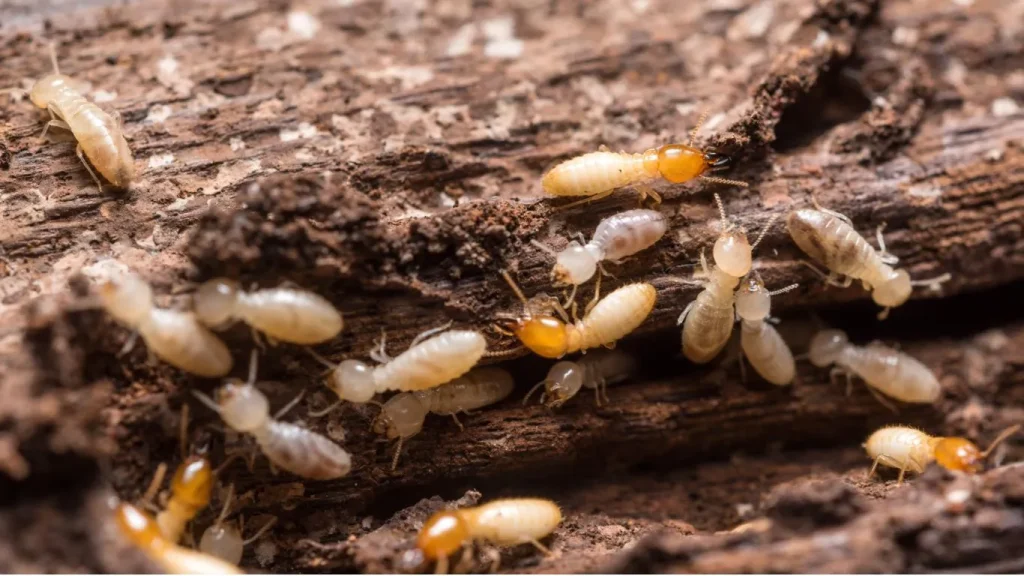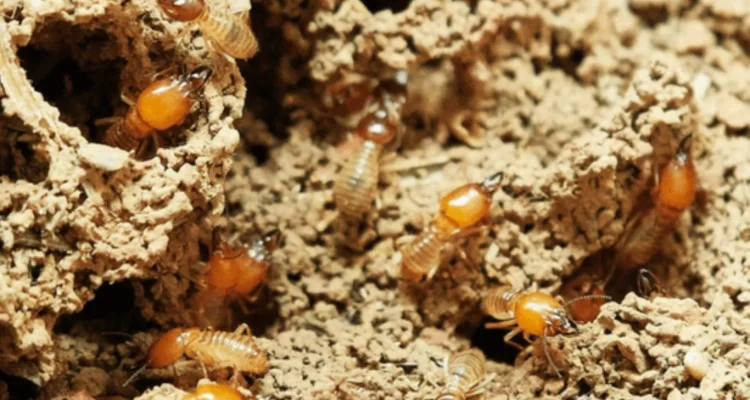Introduction
Termites. Just the thought of these tiny insects can make any homeowner shudder. But what do termites actually look like to the human eye? Understanding their appearance can help you identify and address infestations before they cause significant damage. In this article, we’ll dive into the details of what termites look like, their anatomy, different species, life stages, behaviors, and how you can spot them in your home. By the end, you’ll be well-equipped to recognize these pests and take action to protect your property.

Understanding Termite Anatomy
Termites have a distinct anatomy that sets them apart from other insects. Let’s break down their key physical features.
The Head
The head of a termite is an essential part of its anatomy, housing crucial sensory and feeding structures.
Mandibles
Termites have strong mandibles (jaws) that they use to chew through wood. These mandibles are prominent and vary in size depending on the termite’s role within the colony, with soldiers having particularly large and formidable mandibles for defense.
Antennae
Termite antennae are straight and beaded, unlike the elbowed antennae of ants. These sensory organs help termites navigate and communicate within their colonies.
The Thorax
The thorax is the middle section of a termite’s body, where you’ll find their legs and, in some species, wings.
Legs
Termites have six legs attached to their thorax, which they use for movement and manipulating their environment. Each leg is segmented and ends in a small claw, aiding in their ability to cling to surfaces.
Wings (in certain species)
Reproductive termites, known as alates or swarmers, have two pairs of wings of equal size. These wings are longer than their body and are used during the swarming process to find new nesting sites.
The Abdomen
The abdomen is the largest section of the termite’s body, containing the digestive system and reproductive organs.
Segmentation
Termite abdomens are clearly segmented, giving them a distinctive appearance. The segmentation is more pronounced in certain castes, like soldiers and workers.
Coloration
Termite coloration can range from white to light brown, with soldiers often having darker, more robust heads due to their specialized role.
Different Types of Termites
Termites come in various species, each with unique characteristics. Here are the three most common types:
Subterranean Termites
Appearance
Subterranean termites are typically smaller and have a more translucent body compared to other types. They have dark, hardened heads, especially the soldiers.
Habitat
These termites build their colonies underground and create mud tubes to access above-ground food sources, protecting them from open air and predators.
Drywood Termites
Appearance
Drywood termites are larger than subterranean termites and have a more uniform light brown color. Their bodies are more robust, and they lack the mud tubes associated with subterranean termites.
Habitat
Drywood termites live and feed in dry wood, without the need for soil contact. They are often found in attics, furniture, and framing of houses.
Dampwood Termites
Appearance
Damp wood termites are the largest of the three common types. They have a more elongated body and are usually darker in color.
Habitat
As their name suggests, damp wood termites prefer moist wood. They are often found in decaying wood, logs, and stumps, making them less of a threat to well-maintained homes.
Life Stages of Termites
Termites go through several life stages, each playing a crucial role in the colony’s development and survival.
Egg
Termite eggs are tiny, white, and oval-shaped. The queen lays these eggs in large quantities, ensuring the colony’s growth and sustainability.
Nymph
Development
Nymphs are immature termites that develop through several molts before reaching adulthood. During this stage, they are fed and cared for by worker termites.
Adult
Adult termites are categorized into three primary castes: workers, soldiers, and reproductives.
Worker
Worker termites are responsible for foraging, feeding the colony, and maintaining the nest. They are typically the most numerous caste in a colony.
Soldier
Soldier termites defend the colony from predators like ants. They have larger heads and stronger mandibles compared to workers.
Reproductive
Reproductive termites, or alates, are responsible for creating new colonies. They have wings and leave the colony to mate and establish new nests.
Termite Behavior and Signs of Infestation
Understanding termite behavior can help you spot an infestation early.
Mud Tubes
Subterranean termites build mud tubes as protective tunnels to travel between their colony and food sources. These tubes are a telltale sign of their presence.
Wood Damage
Termites consume wood from the inside out, often leaving a thin veneer of timber or paint. If you notice hollow-sounding wood, it could be a sign of termites.
Droppings (Frass)
Drywood termites leave behind small, pellet-shaped droppings called frass. These can accumulate near infested wood and indicate an active infestation.
Swarmers (Alates)
Swarmers are reproductive termites that leave the colony to mate and start new colonies. Seeing swarmers or their discarded wings is a clear sign of a nearby termite colony.
How to Identify Termites in Your Home
Spotting termites early can save you a lot of hassle and money.
Visual Inspection
Regularly inspect your home for signs of termites, such as mud tubes, damaged wood, and frass. Pay special attention to basements, crawl spaces, and areas with wood-to-soil contact.
Professional Pest Control Inspection
While DIY inspections are helpful, professional pest control services have the expertise and tools to detect termites that you might miss. They can provide thorough inspections and effective treatment plans.
Preventing Termite Infestations
Taking preventative measures can help keep termites at bay.
Reduce Moisture
Termites are attracted to moisture, so fixing leaks, ensuring proper drainage, and using dehumidifiers can make your home less inviting to them.
Proper Wood Storage
Store firewood, lumber, and other wooden materials away from your home’s foundation and elevate them off the ground to reduce the risk of termite infestations.
Regular Inspections
Schedule regular inspections by professional pest control services to catch any signs of termite activity early and address them promptly.
FAQs
What are the first signs of termites?
The first signs of termites often include mud tubes on exterior walls, hollow-sounding wood, and the presence of frass or discarded wings from swarmers.
Can termites bite humans?
Termites are not known to bite humans. Their mandibles are designed for chewing wood and other plant material, not skin.
How long do termites live?
The lifespan of a termite varies by caste. Workers and soldiers can live for one to two years, while queens can live for over a decade in optimal conditions.
Are termites active year-round?
Yes, termites are generally active year-round, though their activity may slow down in colder months. They thrive in warm, humid environments.
Can I treat a termite infestation myself?
While there are DIY termite treatment options, professional pest control services are usually more effective and provide long-term solutions to prevent reinfestation.
Conclusion
Termites might be small, but their potential for destruction is enormous. By understanding what termites look like and recognizing the signs of an infestation, you can take proactive steps to protect your home. Regular inspections and preventative measures are key to keeping these pests at bay.


Congratulation!